|
9/26/2020 The Challenge of Communicating Science: Addressing the Top-Down and Bottom-Up ProblemsRead Now I once heard a story about someone who asked the Nobel Prize winning physicist Albert Einstein to explain the theory of relativity. Einstein proceeded to do that, but when he was finished, the person said that he had not understood and begged Einstein to simplify the explanation. Einstein did that, but the person said he still did not understand and requested a further simplification of the explanation. After going through one or two more rounds of this, the person said that he thought he had finally understood. Einstein sighed, and said that that was good, but what he had just explained was not the theory of relativity. This story is probably apocryphal, but it does illustrate the traditional challenge of communicating complex scientific subjects to the non-specialists which I call the “top-down” problem. The top-down problem happens when we simplify complicated scientific concepts and information to such an extent that we lose the correspondence between the explanation that we provide and the reality we endeavor to explain. And this is not a problem restricted to communicating science to non-scientists. We often also encounter this problem when scientists try to explain aspects of one field of science to scientists in another field, or even to scientists within subdisciplines of the same field! All scientists are specialists in a given field, and as specialists are cognizant of the potential folly of stripping things too much of their complexity and presenting them in such simple terms that they become de facto fantasies. But at the same time they know that the downside of not simplifying is that detailed complex longwinded explanations with a lot of “ifs”, “buts” and “maybes” can be not only boring and incomprehensible, but also downright useless. Scientists also understand that everyone cannot be a specialist in every field, and that people need to acquire a working knowledge of fields beyond those of their expertise. Simplifications are necessary even if there is not a 100% correspondence to the truths they convey. But then the question arises, what level of non-correspondence to reality is acceptable? 5%? 10%? 20%? More? At what level of simplification is a reasonable link to reality lost? The top-down problem in communicating science has been addressed many times, and the key to its solution requires identifying your audience, what you intend to achieve with the simplified information you are providing, and what you think the person receiving the information intends to do with it. Once we have done these things, we can settle on the level of detail that we require. Solving the top-down problem of communicating science is an art which requires a lot of talent and discernment. One striking example of how this problem is addressed can be seen in the video below. The folks from the YouTube channel, Wired, asked astrophysicist Janna Levin to discuss the concept of gravity at five different levels of difficulty exemplified by 1) a child, 2) a teen, 3) a college student, 4) a grad student, and 5) an expert. As Jana progresses from one level to another, it’s fascinating to see how the complexity of the discussion increases even though the subject discussed is the same. A more serious problem in the field of science communication is perhaps the exact opposite of the one I have described, and it has become widespread only with the advent of the internet. I call this problem: the bottom-up problem. The bottom-up problem occurs when people who are not trained in science or that have received limited training in science and in how to think like scientists get hold of scientific communications intended for the experts. These people then think that they are competent to evaluate this complex information and almost invariably go on to misinterpret the research and the conclusions of the scientists in ways that, not surprisingly, reinforce their own biases. Scientists have been stunned to find that the data from their published experiments or clinical trials has been reanalyzed or reinterpreted outside a scholarly context by individuals who arrived at different conclusions. These individuals then disseminate their analyses and claims to their followers which in turn results in accusations that the scientists acted dishonestly because they have presumably sold out to special interests. I have seen this happen in the field related to the evaluation of hydroxychloroquine in clinical trials where these accusations sometimes have been encapsulated in reputation-slandering memes that have gone viral within certain audiences. Scientists of certain visibility who publish results that are negative for hydroxychloroquine often open their e-mails or social media to find them filled with insults and sometimes even threats. And sadly, the individuals misinterpreting the scientific literature are often aided and abetted by some doctors or scientists who instead of keeping their grievances and disagreements within a scientific environment decide to voice them in social media to gain a following and further their personal agendas. What can be done to address the bottom-up problem? At the moment I don’t have an answer to this question that I feel confident about. One idea is to include a disclaimer when information meant for specialists is posted on the internet, advising that non-specialists should not in any way read or analyze the information to draw different conclusions in a manner independent from any meaningful and unbiased input from experts including the authors of the articles. A complementary approach is to create an online regulated Q & A section associated with controversial articles so the authors or their representatives can answer the most relevant questions from the public. In this way, people who could otherwise be swayed by misinformation can have a direct channel to the authors who could then set things straight. Other approaches are possible, but this is a problem that has to be addressed as it threatens to distort the communication of science to the public and make it subservient to special interests who seek to delegitimize science or twist it to further ulterior motives. The image from pixabay by geralt is in the public domain.
0 Comments
A series of randomized trials of hydroxychloroquine (HCQ) have indicated that it doesn’t work against COVID-19 as a single agent or with antibiotics (1, 2, 3, 4, 5, 6,and 7). HCQ proponents have criticized these trials putting forward many arguments. Two of the main arguments are that the doses were too high and that HCQ was not administered with zinc. In response to that, HCQ skeptics like me have argued that we should then wait for the results of randomized trials of lower doses of HCQ or HCQ with zinc. Some (but not all) HCQ proponents reply to this by stating that randomized trials are not necessary because numerous observational (non-randomized trials) have shown that HCQ works. When it is pointed out to them that these observational trials have the potential to be biased due to their non-randomized nature, these HCQ proponents reply that randomized trials have shortcomings too, and that the observational trials that have been performed are all the evidence we need. So how do we resolve this argument? It occurred to me that I would look at some of the observational trials that HCQ proponents defend, and see what the authors of these trials have to say about the matter. Here are their comments:
Treatment with hydroxychloroquine, azithromycin, and combination in patients hospitalized with COVID-19 This is the controversial Henry Ford study. The authors state that: “Our results also require further confirmation in prospective, randomized controlled trials that rigorously evaluate the safety and efficacy of hydroxychloroquine therapy for COVID-19 in hospitalized patients.” COVID-19 outpatients – early risk-stratified treatment with zinc plus low dose hydroxychloroquine and azithromycin: a retrospective case series study (Click on Get pdf) This is the study by the controversial HCQ apologist Vladimir Zelenko. He and his coauthors state that one of the limitations of their study is that it is a: “Retrospective case series study with findings that have to be validated in prospective controlled clinical trials.” Low-dose hydroxychloroquine therapy and mortality in hospitalised patients with COVID-19: a nationwide observational study of 8075 participants This is the large nationwide study from Belgium. The authors state that: “Although observational studies, even of large scale, do not provide final conclusions on treatment efficacy, their results are important to consider in order to guide clinical trials. Well-designed prospective studies combined with large, randomised control trials should provide definitive evidence about the clinical impact of HCQ in severe hospitalised and in mild ambulatory COVID-19 patients.” Use of hydroxychloroquine in hospitalised COVID-19 patients is associated with reduced mortality: Findings from the observational multicentre Italian CORIST study This is the large study from Italy. The authors state that: “Within the limits of an observational study and awaiting results from randomized controlled trials, these data do not discourage the use of HCQ in inpatients with COVID-19.” The Effect of Early Hydroxychloroquine-based Therapy in COVID-19 Patients in Ambulatory Care Settings: A Nationwide Prospective Cohort Study This is a large study from Saudi Arabia. The authors state that: “Additional large randomised controlled trials are recommended to further support this conclusion, particularly in older populations.” Effect of combination therapy of hydroxychloroquine and azithromycin on mortality in COVID-19 patients This is a smaller study from Italy. The authors state that: “There are also several limitations to acknowledge. A first limitation relates to the study design, as we performed a single-center observational study, which does not allow to completely correct for confounders. Only a randomized double-blind clinical trial would provide more solid evidence.” Risk Factors for Mortality in Patients with COVID-19 in New York City This is a New York study involving several hospitals and ambulatory practices. The authors state that: “Due to the inherent limitations of our retrospective study design, there was no conclusive determination on the efficacy of hydroxychloroquine in patients with COVID-19. More robust studies such as randomized clinical trials are needed.” Effectiveness of hydroxychloroquine in COVID-19 disease: A done and dusted deal? Another study from Italy. The authors state that: “…we believe that hydroxychloroquine should be further tested in randomised trials. When best to start treatment is also a question that needs to be addressed in ad-hoc randomized studies.” So the authors of all the above observational studies often cited by some HCQ proponents as definite proof that HCQ works and that we don’t need randomized trials, acknowledge the need for randomized trials or accept that randomized trials would provide more robust confirmatory information. And how couldn’t they? The randomized trial is the gold standard of clinical medicine. The majority of scientists and doctors know and accept this. And in case you are wondering, the observational studies that yielded a negative result for HCQ also make the same kind of statements (for example: A, B, C, D, E, and F). The majority of the authors of the studies mentioned above are not “for” or “against” HCQ. They just wanted to find if the drug worked, and they did what they could with what they had during the difficult setting of a pandemic. I respect that, but as they acknowledge (and I have repeatedly pointed out in my blog), to firmly establish or confirm that HCQ works in a given treatment modality or dosage, we need the randomized trials. Clinical trials image from pixabay by mcmurryjulie is free for commercial use.  I have been posting on social media about the COVID-19 pandemic, and I have encountered a series of misconceptions that people have about doctors, scientists, and the scientific establishment, so let me address them in this post. Doctors and non-physician scientists have been trained in the methods and ways of science, so in that sense they are both scientists, but with one important distinction. The goal of doctors is to save and improve the lives of their patients, and that is even more so during the COVID-19 pandemic. However, the goal of scientists is to figure out what drugs and treatments actually work. Scientists need time to carry out research, but most doctors often don’t have time. The patient is sick NOW and may die, so what do we do? That is the question doctors have to answer in a hurry. When dealing with a disease that has many unknowns such as COVID-19, doctors often have to improvise. This is why doctors have (within reason) freedom to treat their patients as they see fit in consultation with them, although this freedom is regulated by the law, and may be restricted further if the doctor belongs an institution or organization that adheres to certain policies. While doctors and scientists understand that this freedom to deal with a patient’s illness is necessary, both doctors and scientists also understand that, barring some drug or treatment that is exceptionally effective, any treatments doctors come up with can only be validated by well-designed clinical trials. In fact, the majority of doctors will modify their treatments based on the results of clinical trials. Observational studies, where patients are sorted into treated and non-treated groups in a retrospective fashion, are highly prone to biases and cannot substitute for randomized trials. The authors of any such study will state as much when discussing the limitations of their study. This fact is widely accepted by the medical and scientific communities. However, when treating patients doctors deal with situations that often go beyond the mere effectiveness of a drug. For example, if a patient is strongly convinced that a worthless drug will help him or her, the doctor may choose to prescribe the drug anyway (if it is safe) just to exploit the placebo effect.
So next time you hear somebody not trained in science or even some doctors and some scientists say things such as, “Doctor’s know best.” or “We don’t need randomized trials.” or even “We don’t need any trials.”, remember that they represent a minority of all the doctors and scientists who know what works best and how. Now let’s deal next with the scientific establishment. The scientific establishment has been getting a bad rap lately. A series of individuals and groups have gone to the press and social media to claim that the scientific establishment has aligned itself with the interests of pharmaceutical companies to promote their expensive and dangerous drugs or vaccines while rejecting cheap alternatives like hydroxychloroquine (HCQ). They allege that the scientific establishment has known for more than a decade that HCQ works against viruses like the one that causes COVID-19. They allege that the scientific establishment was involved in designing the HCQ trials with high toxic doses on purpose so the negative results could be used against the drug. They allege that the scientific establishment was responsible for the publication of articles based on fraudulent data against HCQ in top journals to give the drug a bad name. And finally they allege that those who reject HCQ are complicit in the murder of tens of thousands of Americans! I have addressed several aspects of these arguments before, so I will only do a brief recap here. The evidence for HCQ having activity against a virus similar to COVID-19 was very preliminary, and turned out to be misleading (see below). Of all the drugs submitted for approval to the FDA, only 14% are approved, and the same trial that found no effect of HCQ (the Recovery Trial) found an effect of steroids, which are cheap generic drugs. Why would this be the case if the scientific establishment is a puppet of big pharma? The HCQ trials were designed with those high doses to favor HCQ, which was considered to be a weak antiviral (now we know that HCQ has no antiviral activity against COVID-19). And those articles based on fraudulent data were retracted. Error was detected, addressed, and eliminated. This is how science should work. I have not addressed the “thousands of deaths” argument before, so I will devote a few sentences to it. Someone honestly convinced about the effectiveness of a therapy and concerned about the lives of patients may use this argument sincerely. However, this argument is a double edged sword, because it is a common subterfuge employed by quacks as a form of emotional blackmail to get worthless therapies or products approved without scrutiny. Many doctors and scientists upon hearing this argument will immediately adopt an adversarial or at least unsympathetic position, because the assumption is that you don’t have the science that it takes to back your claims. So it is not a good idea to use it. When addressing the scientific establishment, you are better served using the common language of evidence, facts, and science. The scientific establishment fulfills an important role in science. The scientific establishment is the keeper of the virtue of science. It protects science against fraud and error. It protects science against dangerous, unproven, or just merely stupid ideas. It protects science against the “unreasonable men”. The scientific establishment is conservative and sets a high bar for the acceptance of evidence. While the scientific establishment has made mistakes in rejecting ideas that were true (although sometimes rightfully so), the overall effect of the scientific establishment is a positive influence upon science. But who or what is the scientific establishment? Critics of the scientific establishment tend to equate it with the leaders of scientific institutions who have the power. This is not true. While the scientific establishment has centers of power, it is made up of millions of voices, each contributing to the debate at different levels and vying to be heard. The scientific establishment is the combined effect of the scientific community. From those scientists who work in labs, to those who perform clinical trials. From those scientists who perform research to those who teach and communicate science to society. From those scientists who advise the heads of government, to those who criticize them, and those who criticize the critics. Although the scientific establishment contains a vast marketplace of ideas, it has a tried and true method to discern which ideas are true and which are not: the scientific method. And one of the things on which the vast majority of scientists agree is that they are unwilling to yield to any pressure that involves compromising this method. Image from Pixabay by Peggy_Marco is in the public domain. Suicide is often considered an irrational decision, and while that may be the case in conditions like mental illness or dire emotional states, the situation is not as clear when this action is the product of a well thought out end of life decision. Among all people, scientists have the reputation of being smart individuals, and among all scientists, presumably the smartest are those that win a Nobel Prize. There are few Nobel Prize winners that have taken their own lives. Was this irrational? Today we will take a look at these individuals and their motivations. 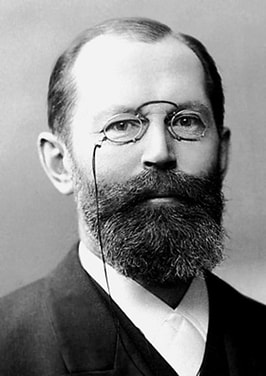 Emil Fischer Emil Fischer Emil Fischer was a German chemist who was one of the towering scientific figures of the early 20th century, and who is considered the father of biochemistry. He discovered and synthesized many molecules such as caffeine, which is the substance in coffee that keeps you awake, and theobromine, which is the substance that makes dogs sick if you feed them too much chocolate. With fellow chemist Josef von Mering, Fischer made the first of the biologically active barbiturates, barbital (sold as Veronal), which has strong sedative properties. He defined the structure of many carbohydrates and was the first to synthesize glucose, the building block of cellulose and starch. For these and other discoveries, Fischer received the Nobel Prize in chemistry in 1902. All the foregoing seems to be something positive to feel good about, but unfortunately in the personal realm, things didn’t go as well. Fischer’s wife had died 7 years after their marriage leaving him to raise 3 sons alone. During the First World War, Fischer enthusiastically joined the war effort, coordinating the interaction between industry, academia, and the military. However, as the war dragged on, he became disillusioned with it and the heavy toll it was taking on German society. In addition to this, two of his sons died during the war. Fisher himself developed ill-health due to exposure to some of the compounds with which he worked in the lab over the years. Depressed over the effects of the war on his country and the deaths of his two sons, a diagnosis of intestinal cancer seemed to push him over the edge, and he committed suicide in 1919 using cyanide, one of the compounds he had successfully employed in his research.  Hans Fischer Hans Fischer Hans Fischer was a German chemist who won the Nobel Prize in Chemistry in 1930 for working out the structure of hemin and performing its synthesis (hemin is the core of the hemoglobin molecule that makes possible the transport of oxygen in the blood), and for his work on the structure of chlorophyll, which is the pigment in plants that makes photosynthesis possible. He also figured out the structure of bilirubin (the pigment that gives sufferers of jaundice their yellow color) and synthesized it. He is not related to Emil Fischer, but he worked as his laboratory assistant for two years. Hans married but never had children. Although he was an avid outdoorsman, he was a man mostly devoted to his work. Unfortunately, his laboratory and most of his life’s work was obliterated during a bombing in the last days of World War II. As a result of this, Fischer fell into depression and committed suicide in 1945 at the age of 63. 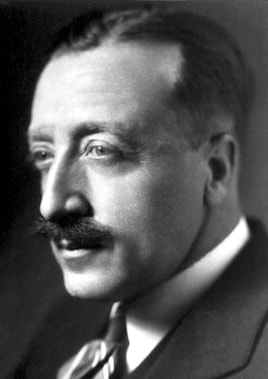 John Howard Northrop John Howard Northrop John Howard Northrop was an American biochemist who won the 1946 Nobel Prize in Chemistry for his work in isolating and crystalizing proteins. One of his critical achievements was demonstrating that enzymes were proteins. Northrop was an enthusiastic fisherman and hunter who remained active into his nineties, but as he got older and weaker, although he remained lucid, he may have viewed his future with concern about becoming a burden for his family and friends. Northrop committed suicide in 1987 at the age of 96. 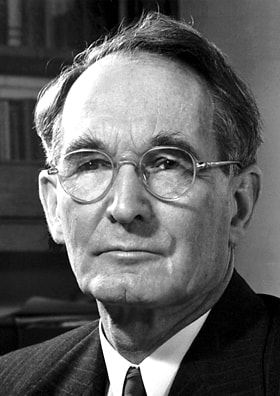 Percy Williams Bridgman Percy Williams Bridgman Percy Williams Bridgman was an American physicist who discovered that the properties of substances change dramatically under high pressures. His work had a profound influence in areas such as the understanding of Earth’s geology at great depths, and won him the Nobel Prize in physics in 1946. Beyond that, Bridgman was an excellent family man, philosopher, teacher, plumber, carpenter, gardener, and piano player! He was admired and loved by many. So why is his name in this list? Bridgman developed a serious difficulty in using his legs and was afflicted with intense pain and fatigue. He was diagnosed with metastatic bone cancer. When he realized he would be dead in a matter of months he asked the physicians who examined him to provide him something he could take to take his life. When they refused, he committed suicide by shooting himself in 1961 at the age of 80. A note found in his pocket that has been quoted by many proponents of assisted suicide read: "It isn't decent for Society to make a man do this thing himself. Probably this is the last day I will be able to do it myself." 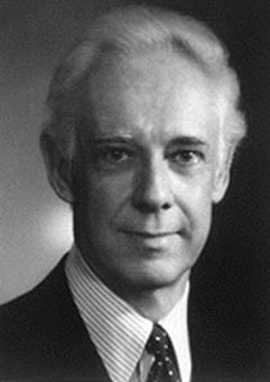 Stanford Moore Stanford Moore Stanford Moore was an American biochemist who received the Nobel Prize in Chemistry in 1972. His invention of a machine to analyze amino acids (the building blocks of proteins) made it possible to figure out the linear structure of complex proteins and relate their function to their structure. This achievement heralded the “protein era” in biochemistry which had widespread effects on areas ranging from medicine to industry. Moore never married and was not interested in material gain or personal possessions (he never patented any of the methods or instruments he invented). He was extremely organized and led a frugal lifestyle totally devoted to science working long hours and weekends. He was diagnosed with amyotrophic lateral sclerosis (Lou Gehrig's disease), and his mobility and health became progressively impaired. In 1982 at the age of 68 after putting his affairs in order, he committed suicide in his apartment. 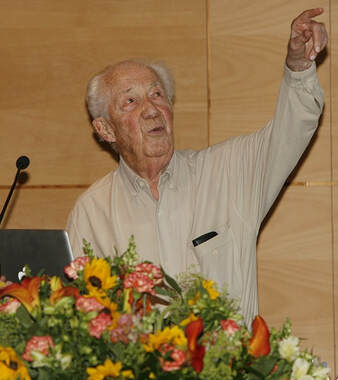 Christian de Duve Christian de Duve Christian de Duve was a Belgian cytologist who won the Nobel Prize in Physiology and Medicine in 1974 for discoveries regarding the structural and functional organization of cells. His approach of “exploring cells with a centrifuge” brought about a revolution in cell biology and biochemistry, and permitted him to discover two important cell organelles, the lysosome and the peroxisome which in turn helped scientists make many advances and understand the etiology behind dozens of genetic diseases. He considered his life to be “extraordinarily rewarding” and full of “joy and pleasure”, but towards the end he developed a host of health problems including cancer, and suffered a fall that incapacitated him. de Duve lived in Belgium where physician-assisted suicide is legal. In 2013 at the age of 95 de Duve surrounded by his family and assisted by two doctors took his life. One of his daughters said, “He bid us adieu, and he smiled at us, and then he left us.” All the scientists featured here were bright accomplished individuals who changed the world with their work. Whereas dire life circumstances were a component of the decisions made by Emil and Hans Fischer to end their lives, the end-of-life decisions of the rest of the scientists mentioned here had a motivation rooted in infirmity. I do not view the decisions of highly intelligent lucid men like Northrop, Bridgman, and Moore as irrational, but I view the fact that they had to carry them out as secretive affairs alone and away from family and friends as tragic. Contrast their suicides with that of de Duve which was really a formal and celebrated end to an exceptional life. Science cannot tell us whether suicide is good or bad, or moral or immoral - that is the realm of ethics, philosophy, and religion. But I believe that if we are willing to bestow a Nobel Prize to individuals as recognition for achievements that derived from their intellects, we should be willing to be equally gracious when these intellects decide it’s time for an end-of-life decision. And you should not need to win a Nobel Prize to be worthy of this kind of respect. Photo of Emil Fischer by Atelier Victoria (Inh. Paul Gericke, gegr. 1894), Berlin is in the public domain. Photos from the Nobel Foundation of Percy Williams Bridgman, Hans Fisher, and John Howard Northrop are in the public domain. The photograph of Stanford Moore is used here under the doctrine of Fair Use. The photograph of Christian de Duve by Julien Doornaert is used here under an Attribution 2.5 Generic (CC BY 2.5) license. |
Details
Categories
All
Archives
June 2024
|
 RSS Feed
RSS Feed